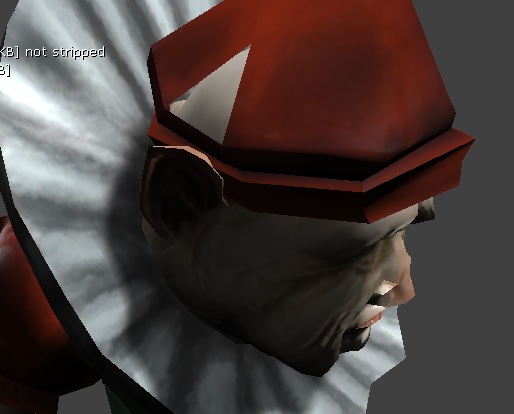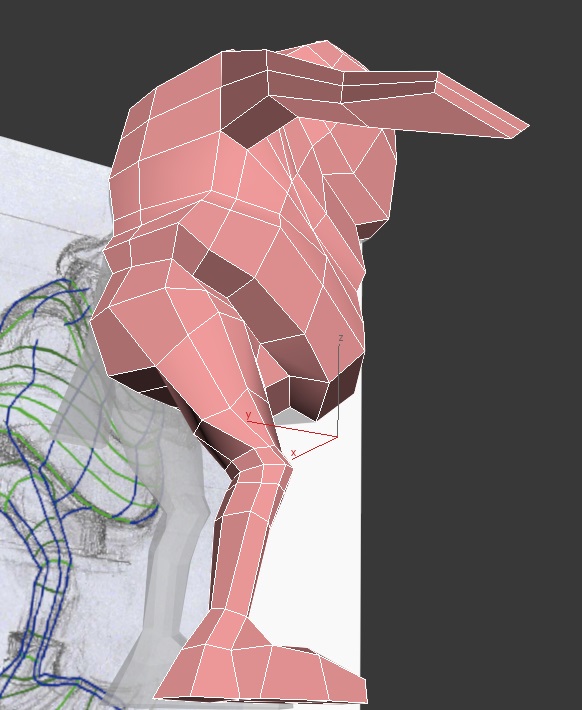Introduction

‘Drakborgen’ is a two to four player board game were each player controls a character of choice, navigating through a maze. The goal is to scavenge for loot while avoiding traps, fighting monsters and possibly also other players (depending on which rules you play with). Ultimately, the players must try to escape the castle with the highest gold worth of treasure before the time runs out.
The game board consists of 9 x 9 square tiles. Each tile have two hidden cards (except the four far corner rooms); one ‘room card’ and one ‘content card’. One of the middle 3 x 3 tiles contain the ‘dragon room card’ instead of a ‘room card’. Which is the one is to remain unknown to the players.
Players take turn navigating one tile at a time through the castle. When players step on tiles containing hidden cards, the cards will be revealed, and the ‘content-‘ and ‘room card’ will come into play. The movement choices for the next round is revealed to the player via the ‘room card’, and her character is put into interaction with the ‘content card’. If the ‘content card’ contains an item, the player can pick it up. If the card contains a monster, the player will engage in combat. If the card contains a trap or chest, the player will have to deal with it trap as the card specifies.
Characters
All characters have individual properties that vary drastically from each other: Some characters have special rules, some start the game with specific items in their inventory, some control an additional unit for assistance (a pet), and all have the same four attributes. All characters have a number from one to twelve in each attribute, indicating their proficiency. The higher an attribute’s number is, the higher is the chance of successfully preforming an action using that attribute. Depending on which character you play, different strategies will be available, thus the players choice of play style is dependent on which character she plays.
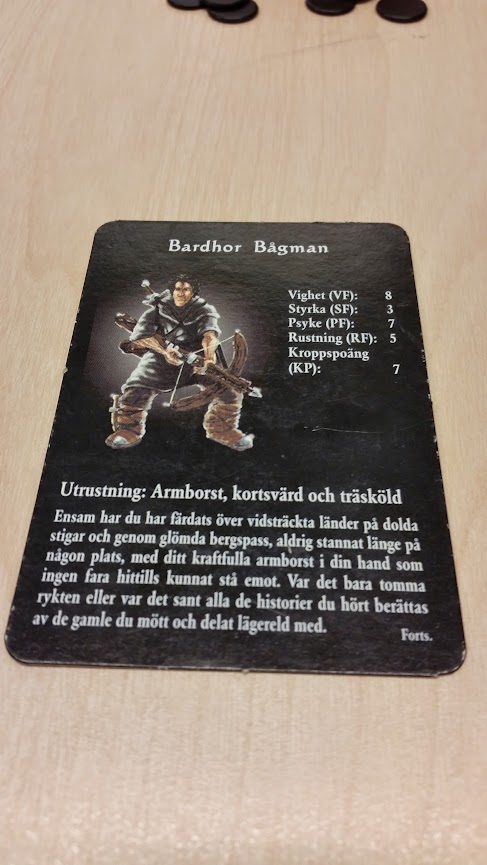
Actions with Attribute Roll Checks
Certain actions in the game, such as breaking locked doors, avoiding a trap, or walking across a footbridge, require the player to use one of her characters’ attributes. Any action can be attempted regardless of attribute numbers, but the number of the attribute defines weather the action succeeds or not. The attempts is made using a D12, if the player rolls less than the number of her attribute, the action is a success. some actions also take attributes of monsters into consideration.
Room Cards
Room cards define what directions are available for players to enter and exit the corresponding tile. There are also indications on the card if exits are blocked by doors or portcullises, if there’s a dungeon entrance, or if any of the walls contain hidden passages.
If a passage is blocked by a door or portcullis, the player has to use a character’s strength or agility attribute in a roll check in order to move in that direction.
Some ‘room cards’ just contain a corridor. In such a case, the corresponding ‘content card’ is ignored, and the entering player can continue through the corridor onto a new tile.
In rare cases, a ‘room card’ contains a pit or a footbridge. The pit function as a trap that if not dodged successfully, the player must enter the dungeon. The footbridge function as a one-way corridor containing a trap, if not dodged successfully, the player must discard collected treasure.
Content Cards
The ‘content cards’ provide small “scenarios” for the players. They are what urges the player to explore the castle, and invokes tension and anticipation. They contain either a reward, a challenge with risk of punishment, or in rare cases, a challenge with both risk of punishment and a chance of reward. Content cards can contain; monsters, traps, items, treasure, and in rare cases, events.

Combat
When a player enters combat with a monster, another player must pick up a monster card, containing some of the monsters properties for that fight: Health points, defining how many successful attacks it will take to kill the monster, and how it will react to each of the players available actions. The player get three choices, she can either attack, escape or wait for the monster to make the first move. Monsters have four possible reactions; they can flee, attack, follow (only if player flees), or stand idle (not if player attacks).
The combat uses a transitive system were the player and monster pick one of the four attributes to fight with, then simultaneously reveals it to each other. each attribute is vulnerable to one other attribute and effective against another. A combatant deals one point of damage is the opponent picked the weaker attribute. If they pick the same, the combatant with the highest level in that attribute will deal the difference in damage to the opponent. this will be repeated until one combatant is defeated or if there has been no successful hits for three rounds.
Dragon Room Card
When a player enters the dragon room, they can chose to pick one ‘treasure card’. However, if they do, they must also pick a ‘dragon card’. There are twelve ‘dragon cards’, eleven of them does nothing, but one will wake the dragon, forcing everyone in the room to battle it.
Mechanics
The core mechanics include two vital resources, the ‘health points’ and the treasure’s ‘gold worth’. There are also a number of important objects; the player’s ‘character’, the ‘dragon’, ‘room cards’, and ‘content cards’.
‘Object-‘ and ‘room cards’ are hidden from the players until a character interacts with them. ‘Object-‘ and ‘room cards’ are paired always paired, and are both interacted with and revealed simultaneously.
The two resources are what defines the victorious and losing players; if a player depletes all her ‘health points’, she will lose the game. Though if she finishes the game with the highest ‘gold worth’ of treasure, she will win. ‘Health points’ are generally depleted when the player encounters a ‘monster’ or ‘trap’ through the interaction between the ‘character’ object and ‘content card’ objects. However, the risk to encounter something that will drain your ‘health points’ is not complete, there is also a chance that the ‘content’ property of the card is something that benefits the player, most importantly; treasure, which will boost the player’s ‘gold worth’ resource. This risk and reward system is what drives the entire game, the player must ask herself the qustion; should I continue into the castle with the risk of dying but with a chance to earn more gold? Or should I turn back and be satisfied with what I’ve got?
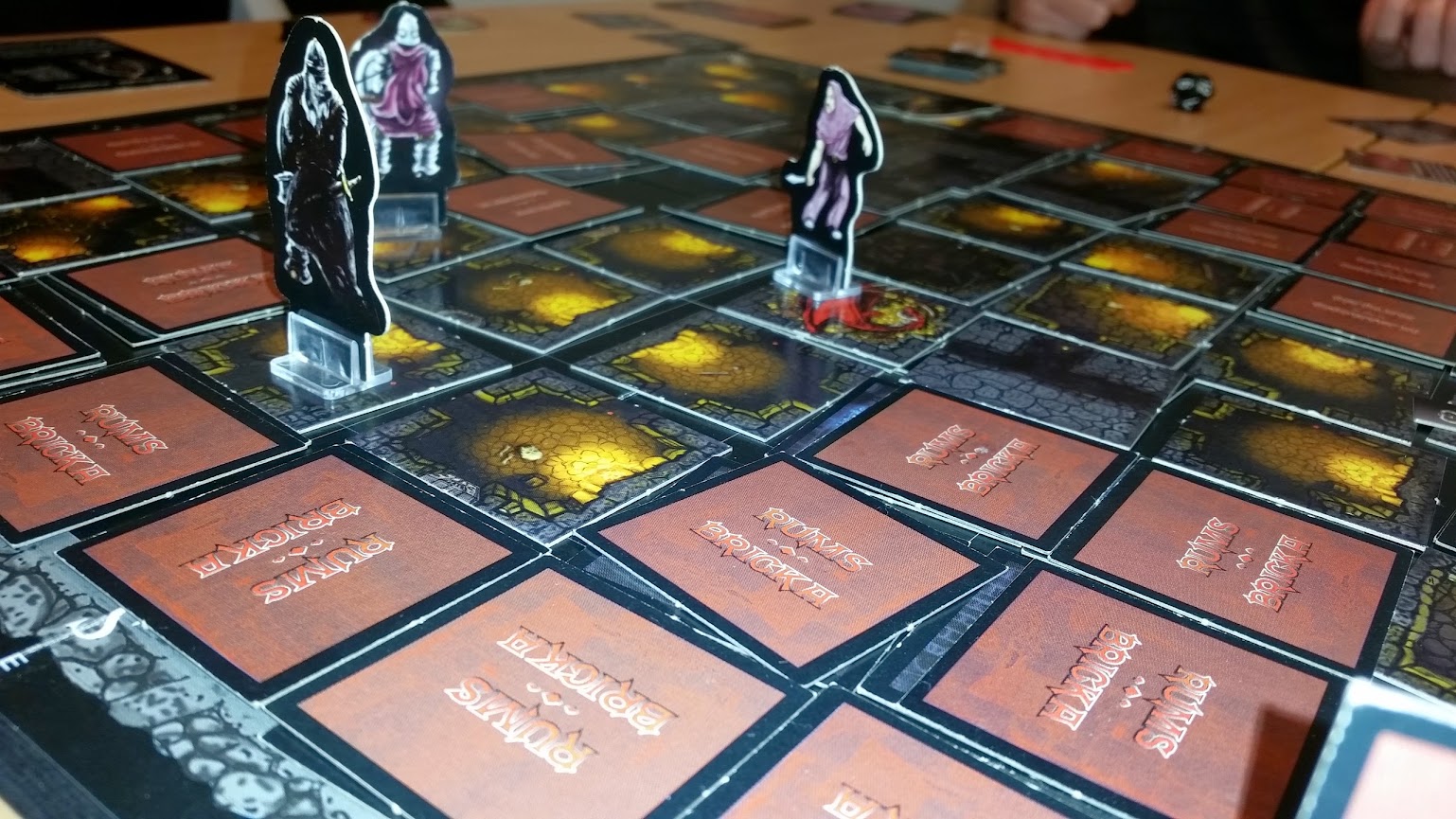
Positive
I’d say that the best thing about ‘Drakborgen’ is the dragon itself. Since the rewards for looting the ‘dragon room’ are so great, it becomes a primary goal for the players to find it, encouraging them to venture deep into the castle. The fact that you know exactly what the chance of waking the dragon every time you pick a treasure is, allows for a somewhat strategic approach, which also makes it more exciting. Whereas the content of the other rooms are perceived as almost completely random. In conclusion, the tension of the risk and reward gambles are what makes the game fun.
Negative
Whats I find bad about this game is somewhat connected with what’s good about it; the fact that almost everything is decided by chance. There is almost no strategy or planning involved, since there is no way you can know anything about the outcome of your choices. There are of coarse items you can find and use in different situations, however, it’s very straight forward when you’re supposed use them, most items only really increases your chance to survive longer and doesn’t provide you with any strategic choices.
All in all, I believe that this game could be very frustrating if you have a stroke of bad luck, since there is absolutely nothing you can do to help yourself in that situation, and it doesn’t really make you feel proud of yourself when you win, since it rarely is from your skills.
Target Audience
I would probably suggest this game for gamblers. It’s really what the whole game is about, you’re presented with a number of choices, that all has chance of rewarding you, and risk of hurting you. It is same kind of thrill which you gain from a roulette wheel or slot machine: You chose a number/decide when to press the button. The choice is really irrelevant since you can’t know what the outcome will be, but you still get the illusion that you are somehow active in deciding your fate.
I would also suggest this to pen and paper role players looking for something short and more lazy. ‘Drakborge’ reminds a lot about your traditional D&D dungeon crawler, however it doesn’t require as much time or effort, so it can be played on a lazy Sunday afternoon, when you feel like hunting some loot with your friends, but is too tired to start up a new role playing project.
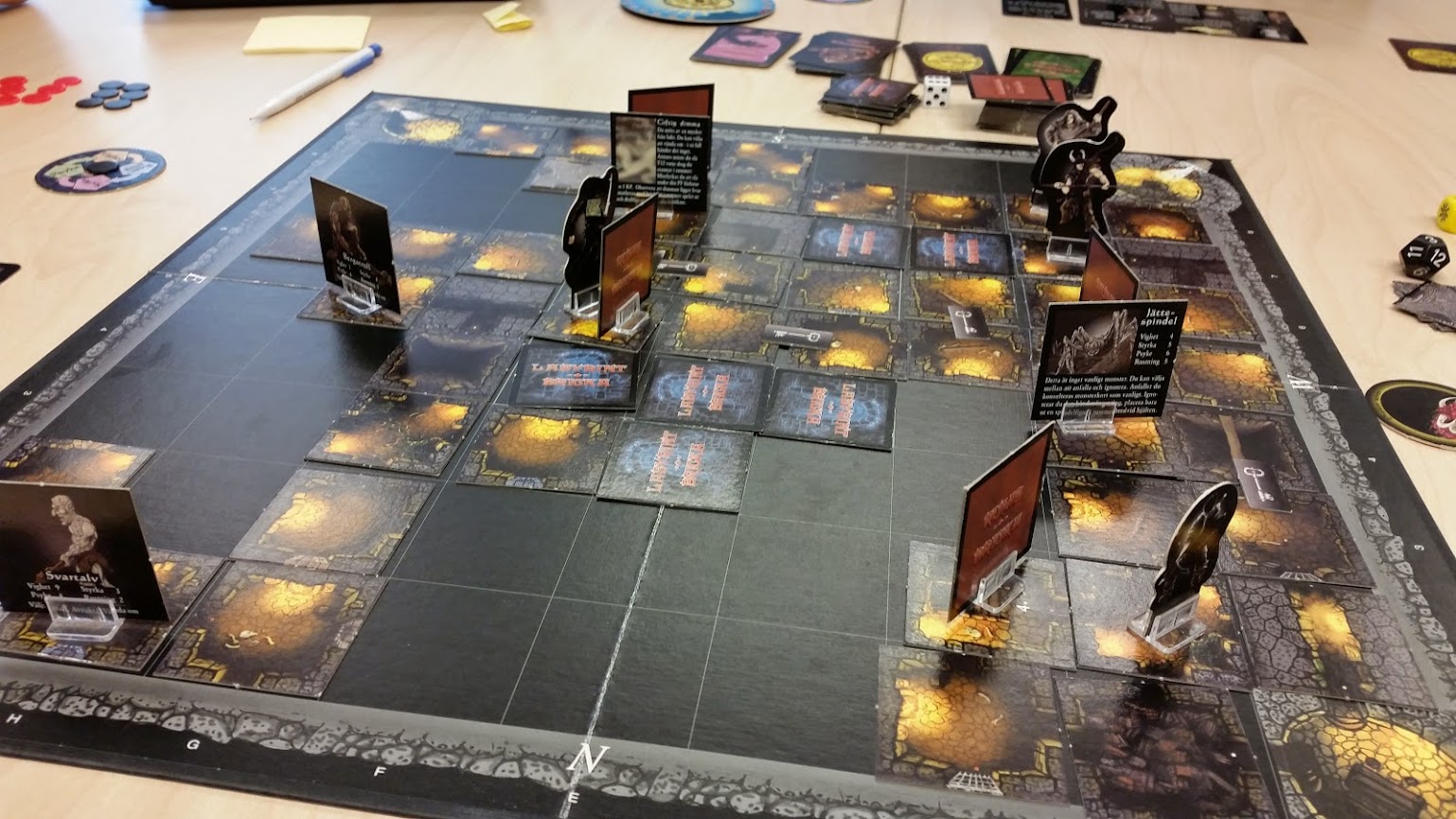
Interesting system
The ‘dragon room’ is without doubt the most interesting part of the game. If a player happen to end up in the ‘dragon room’ (by interacting with a ‘room card’ that happen to have the property of being the ‘dragon room’), the dragon will come into play. Each round every player positioned in the ‘dragon room’ has the chance to interact with the dragon once. If a player choose to interact with the dragon, she will gain a random treasure card, increasing her ‘gold worth’. However, each time a player interacts with the dragon, there is a risk of changing the state of the the sleeping dragon to awake, changing it’s behavior to that of an active monster. The risk of waking the dragon starts at 1 to 12 and increases with each interaction until the risk is 1 to 1, and waking the dragon is inevitable.
This system creates an interesting dynamic that challenges the players greed. The player is seduced to stay by being continuously rewarded, but increases the danger the longer she stays.
Conclusion
The player is tempted by treasure (to win the game) and curiosity to discover the map and find out what awaits them in the tunnels. By digging deeper into the castle, the players can can find more treasure and miscellaneous items, but it also means exposing themselves to danger.
In conclusion, the game plays with similar base rules to ‘Greedy Pig’ mixed with elements of exploration. The risk and reward system is what this game is all about, and the trick is to know when to stop. It’s quite a bit of fun as long as you don’t take it to seriously and get upset when things go bad.



